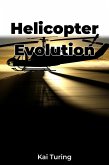Through a blend of declassified documents, technical specifications, and firsthand accounts, the book illuminates how engineers and pilots conquered the seemingly impossible challenge of faster-than-sound travel. The book's chronological approach guides readers from early aerodynamic theories through the Cold War era's rapid technological advancement, examining crucial innovations like swept-wing design and heat-resistant materials.
It delves into both military applications, including the development of supersonic fighters like the F-100 Super Sabre and MiG-19, and civilian achievements such as the Concorde. Particularly fascinating is the book's examination of how supersonic flight technology influenced broader historical contexts, including the Cold War arms race and commercial aviation evolution.
Written for both aviation enthusiasts and engineering professionals, the work maintains technical accuracy while remaining accessible to general readers. It skillfully balances detailed analysis of aerodynamic principles with engaging human stories from aviation pioneers.
The book concludes with a forward-looking perspective on modern supersonic developments, including emerging business jet programs and hypersonic research, making it a valuable resource for understanding both the history and future of high-speed flight.
Dieser Download kann aus rechtlichen Gründen nur mit Rechnungsadresse in A, B, BG, CY, CZ, D, DK, EW, E, FIN, F, GR, H, IRL, I, LT, L, LR, M, NL, PL, P, R, S, SLO, SK ausgeliefert werden.









